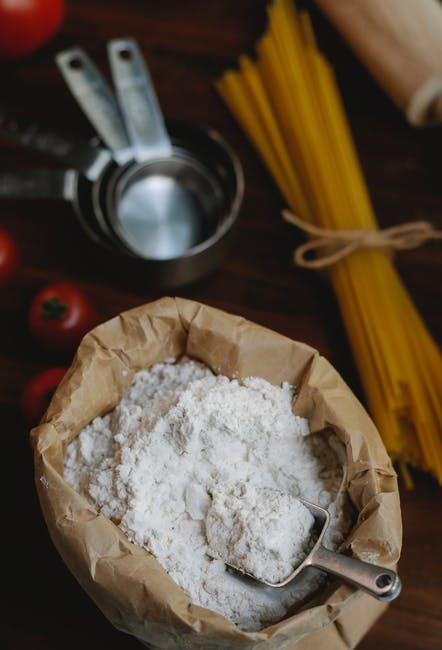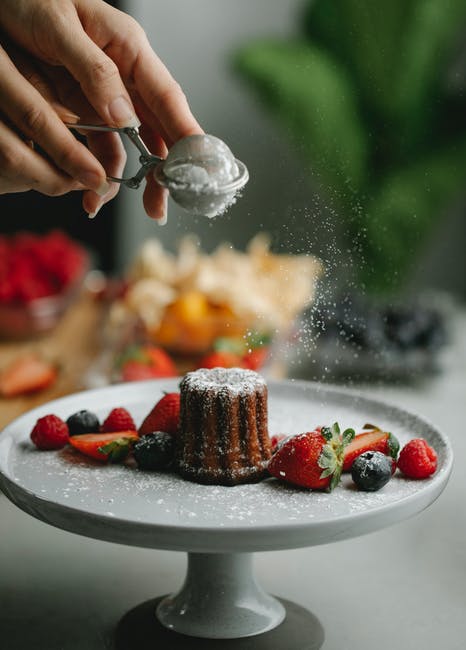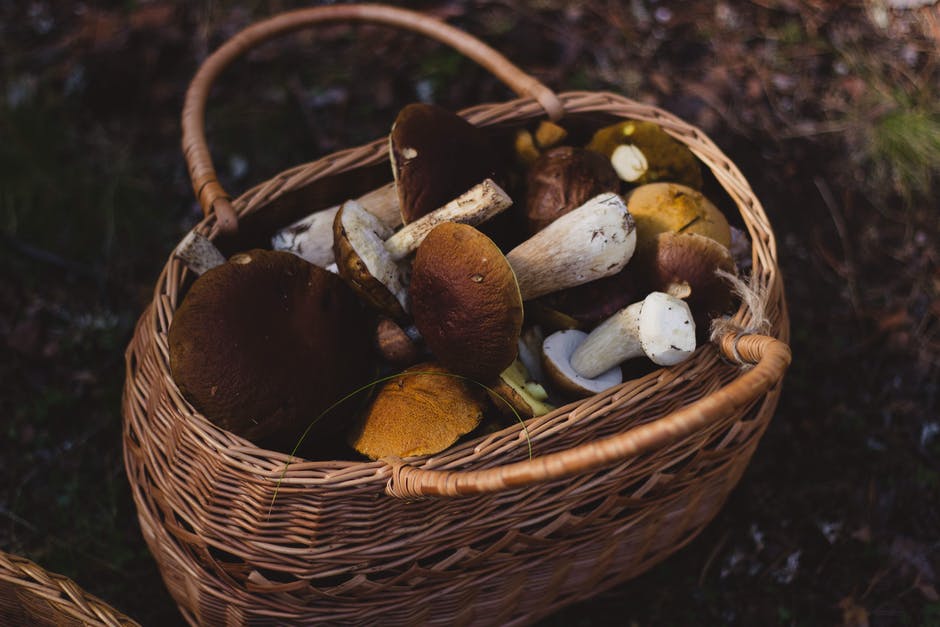Die Indische Mehlmotte, wissenschaftlich bekannt als Plodia interpunctella, ist ein weit verbreiteter Schädling in Haushalten und gewerblichen Räumen. Sie sind dafür berüchtigt, dass sie gelagerte Lebensmittel wie Körner, Getreide und Nüsse befallen und große Schäden und Verunreinigungen verursachen. Es mag schwierig sein, diese lästigen Insekten loszuwerden, aber das ist wichtig, um einen erneuten Befall und den Verderb von Lebensmitteln zu verhindern.
In diesem Artikel möchte ich einige wirksame Methoden vorstellen, mit denen man die Dörrobstmotte loswerden und ihre Wiederkehr verhindern kann.
Identifizierung der Indischen Mehlmotte
Bevor wir uns mit den Möglichkeiten zur Beseitigung dieser Schädlinge befassen, sollten wir zunächst lernen, wie man sie identifiziert. Erwachsene indische Mehlmotten sind etwa ⅝ Zoll lang und haben eine Flügelspannweite von ¾ Zoll. Sie haben unverwechselbare graubraune Flügel mit rötlich-braunen Markierungen an der Spitze. Die Larven dieser Motten sind etwa 12 cm lang und haben eine cremeweiße Farbe mit einem braunen Kopf. Sie spinnen einen seidenen Faden und bilden Kokons, in denen sie sich zu erwachsenen Motten verpuppen.
Wenn Sie bemerken, dass erwachsene Motten oder Larven in Ihren gelagerten Lebensmitteln herumkrabbeln, ist das ein deutliches Zeichen für einen Befall. Möglicherweise bemerken Sie auch netzartiges Material auf Ihren Lebensmitteln, das von den Larven stammt, die ihre Kokons spinnen. Wenn Sie eines dieser Anzeichen entdecken, ist es Zeit zu handeln.
Reinigen und entrümpeln Sie Ihre Küche
Der erste Schritt, um die Motten loszuwerden, besteht darin, die Küche zu reinigen und zu entrümpeln. Diese Motten gedeihen in schmutzigen und unordentlichen Räumen, also achten Sie darauf, dass Ihre Küche sauber und aufgeräumt ist. Nehmen Sie alle Lebensmittel aus der Speisekammer, den Schränken und Schubladen und untersuchen Sie sie auf Anzeichen von Befall. Werfen Sie alle befallenen Gegenstände weg und reinigen Sie die Regale und Schubladen gründlich mit Wasser und Seife. Wischen Sie die Wände und die Decke Ihrer Speisekammer mit einer Lösung aus Essig und Wasser ab, um alle Eier und Larven abzutöten.
Saugen Sie Ihre Küche ab
Das Staubsaugen in der Küche ist eine weitere wirksame Methode, um die Dörrobstmotte loszuwerden. Verwenden Sie einen Handstaubsauger, um alle Ritzen und Spalten in Ihrer Speisekammer, Ihren Schränken und Schubladen zu reinigen. Achten Sie besonders auf die Ecken und Kanten, in denen sich die Motten und Larven verstecken können. Entsorgen Sie den Staubsaugerbeutel sofort nach dem Saugen, um eine Ausbreitung der Motten zu verhindern.
Verwendung von Pheromonfallen
Pheromonfallen sind eine wirksame Methode, um Mehlmotten zu fangen und einen weiteren Befall zu verhindern. Diese Fallen enthalten einen Köder, der die männlichen Motten anlockt und sie in eine Falle lockt, so dass sie sich nicht mit den Weibchen paaren können. Dadurch wird der Paarungszyklus unterbrochen und die Mottenpopulation reduziert. Stellen Sie diese Fallen in Ihrer Speisekammer und anderen Bereichen auf, in denen Sie Lebensmittel lagern.
Natürliche Heilmittel verwenden
Es gibt mehrere natürliche Mittel, die helfen können, indische Mehlmotten loszuwerden. Ein solches Mittel ist die Verwendung von Zedernholz. Der starke Duft von Zedernholz ist dafür bekannt, dass er Motten und andere Insekten abwehrt. Legen Sie Zedernholzspäne oder -blöcke in Ihre Speisekammer, Schränke und Schubladen, um die Motten fernzuhalten. Zur Mottenabwehr können Sie auch ätherische Öle wie Lavendel-, Pfefferminz- und Eukalyptusöl verwenden. Tränken Sie einen Wattebausch mit diesen Ölen und platzieren Sie ihn in Ihrer Speisekammer und anderen Bereichen, in denen Sie Lebensmittel aufbewahren.
Ein weiteres natürliches Mittel ist die Verwendung von Kieselgur. Dies ist ein feines Pulver, das aus den versteinerten Überresten von Kieselalgen, einer Algenart, hergestellt wird. Das Pulver ist abrasiv, trocknet die Motten aus und tötet sie ab. Streuen Sie das Pulver in Ihre Speisekammer, Schränke und Schubladen und lassen Sie es ein paar Tage liegen, bevor Sie es absaugen.
Insektizide verwenden
Bei starkem Befall müssen Sie möglicherweise Insektizide einsetzen, um die Mehlmotten loszuwerden. Es ist jedoch wichtig, Insektizide nur als letztes Mittel einzusetzen und die Anweisungen sorgfältig zu befolgen. Verwenden Sie Insektizide, die speziell für Mehlmotten entwickelt wurden und für den Einsatz in Küchen und Lebensmittellagerräumen zugelassen sind. Denken Sie daran, dass Insektizide Menschen und Tiere verletzen können, treffen Sie daher alle erforderlichen Sicherheitsvorkehrungen und sorgen Sie dafür, dass der behandelte Bereich gut belüftet ist.
Vorbeugung ist der Schlüssel
Vorbeugen Sie dem Befall Ihrer gelagerten Lebensmittel durch die Dörrobstmotte, damit Sie sie nicht mühsam wieder loswerden müssen. Hier sind einige Tipps zur Vorbeugung von Mottenbefall:
- Lagern Sie Ihre Lebensmittel in Gläsern oder Kunststoffbehältern mit dicht schließenden Deckeln.
- Kontrollieren Sie regelmäßig das Verfallsdatum Ihrer Lebensmittel und entsorgen Sie abgelaufene Produkte.
- Lagern Sie Lebensmittel nicht zu lange in Ihrer Speisekammer, Ihren Schränken oder Schubladen. Wechseln Sie Ihre Lebensmittel und verwenden Sie die älteren zuerst.
- Reinigen Sie Ihre Küche regelmäßig und halten Sie sie frei von Unordnung.
- Prüfen Sie alle neuen Lebensmittel, bevor Sie sie in Ihrer Speisekammer, Ihren Schränken oder Schubladen lagern.
Mit diesen Tipps können Sie Ihre Küche frei von der Indischen Lebensmittelmotte halten und Ihre Lebensmittel unbesorgt genießen. Wenn Sie weitere Strategien oder Techniken kennen, um indische Mehlmotten loszuwerden, hinterlassen Sie sie bitte im Kommentarbereich unten. Wir würden uns freuen, Ihre Kommentare dazu zu hören!




















